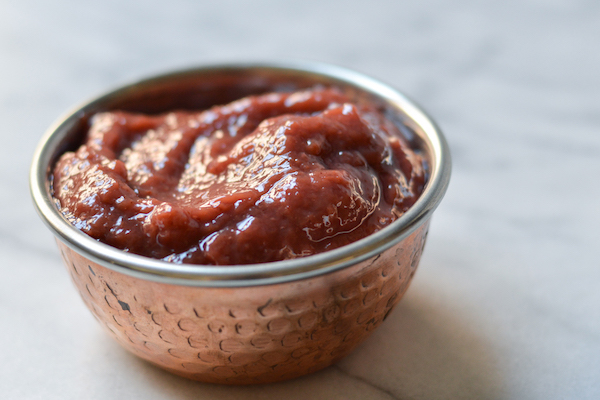Plant-Based Culinary Arts Chef-Instructor Olivia Roszkowski says these miso substitutes will add similar salty, savory, funky flavors to your dishes.
Miso is acclaimed for its salty, umami, sweet and fermented notes that can transform a dish in an instant. In the event that you need to substitute out this Japanese cooking staple, here's what to use instead of miso paste.
Note: The below ingredients can add similar flavor profiles to your dish, but they should be used in a season-to-taste fashion and not substituted for miso in a 1:1 ratio.
Shio Koji
The culture koji, traditionally used to ferment soybeans into miso, can be turned into a paste with the addition of salt and water. Ferment the koji paste mixture for a few days for additional flavor. Using koji is a great miso substitution for seasoning dishes, tenderizing ingredients and adding probiotics in your next meal. Try smearing it on a block of tofu, cover with plastic wrap, refrigerate and watch it transform into a block of cheese in a matter of days. Add a spoonful of koji paste to coconut caramel for the ultimate sweet and salty kick.
Check out ICE's Fermentation Lab.
Natto
Created by fermenting soybeans with baccillus subttilis (a good kind of bacteria), natto features a faint coffee smell and some mild blue cheese notes. Natto is typically sold in whole soybean form, so consider blending it in a food processor with a small amount of water and some salt if the recipe calls for miso paste. Natto’s complex notes make for a successful fish sauce substitute.
Umeboshi Paste/Vinegar
Fermented plums in a salted brine, umeboshi pairs beautifully with miso, and can also stand alone in recipes as it adds a salty, sweet and sour pop of flavor. Try it as a sub for white miso paste by adding it lentil soup, polenta or when making hummus. Use sparingly, as the flavor is very concentrated and incredibly salty.

Nutritional Yeast, Garlic Powder, Apple Cider Vinegar Powder and Sea Salt
If it’s the cheesy notes you are seeking, try substituting miso with this seasoning blend. Combine 2 tablespoons of nutritional yeast, 2 teaspoons garlic powder, 1 teaspoon apple cider vinegar power and 1/2 teaspoon sea salt in a jar and store for future use. It tastes great on popcorn, mixed into dips, atop a massaged kale salad or with ravioli.
Allium and Acid
When you combine anything from the allium family with an acid, you will activate cheesy flavor notes. Try combining scallion with lemon juice in a tofu ‘cream cheese’ or rice vinegar and garlic in a cashew cream. This hack also works well when seasoning soups. Just sprinkle in some garlic powder and a splash of vinegar.
Preserved Lemons
The flavor will be more citrus-centric, but the fermented and salty nature of this probiotic condiment can pack a punch just like miso, and works well in pesto, plant-based cheeses, dressings and marinades. Make your own by slicing 5 lemons, juicing 5 additional lemons, packing it into a jar with 1/4 cup sea salt and fermenting for one to two weeks at room temperature.
Read More:Preserving Winter Citrus
Organic Vegetable Bouillon Paste
This alternative is great used sparingly if your broth occasionally needs an umami boost or change in hue. Make sure to dissolve the paste in a small amount of water before adding to soups to prevent clumping and consider sourcing a quality product that does not contain MSG. Add a spoonful into biscuit dough for umami-rich, fresh biscuits.
Black Garlic
This aged, fermented garlic is available in whole or powdered form. The taste contains notes of dates and soy sauce, and it will definitely up the umami level of a dish. Try in pasta dishes or when looking to flavor an aioli. Add to a risotto, compound butter or compound plant-based butter.
Tamari/Coconut Aminos
Tamari is a gluten-free aged soy sauce, whereas coconut aminos come from the sap of the coconut plant. Both are salty and contain plenty of the same free-forming amino acids (which create that umami flavor) found in miso. For an easy miso substitute, blend a few tablespoons of either tamari or coconut aminos with a can of cooked chickpeas. If desired, season with additional sea salt.
More like this:Butter Alternatives






